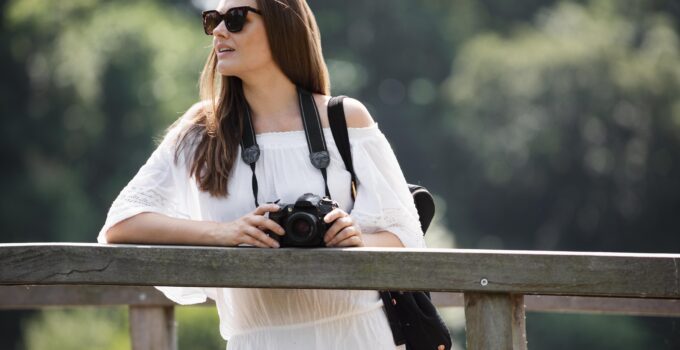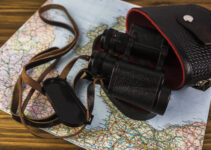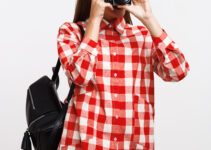Ever wondered how to effortlessly carry your camera while keeping it safe and accessible? A camera sling bag might be your perfect solution!
This versatile accessory is designed for photographers on the go, combining style, comfort, and functionality.
Worn diagonally across your body, it allows for quick access to your camera and gear without the hassle of removing the bag.
Whether you’re trekking through nature or navigating city streets, the sling bag ensures your equipment stays secure and within reach.
Plus, its ergonomic design distributes weight evenly, reducing strain on your shoulders and back, making every photography adventure more enjoyable.
What is camera sling bag?
A camera sling bag is a specialized type of bag designed for photographers to conveniently carry their camera gear.
Unlike traditional backpacks, it features a single strap that allows the bag to be worn across the body, providing easy access to equipment without the need to remove the bag entirely.

The sling design allows for quick rotation from the back to the front, making it easy to grab the camera or accessories on the go.
These bags typically have padded compartments to protect cameras, lenses, and other equipment from damage.
They often include additional pockets for smaller items like memory cards, batteries, and personal belongings.
The ergonomic design distributes weight evenly, reducing strain on the shoulders and back, making it comfortable for extended use.
Camera sling bags are popular among photographers who need to be mobile and ready to capture moments quickly, offering a practical blend of accessibility, protection, and comfort.
How to wear a camera sling bag?
To wear a camera sling bag, follow these steps:
- Position the Bag: Start by placing the bag over one shoulder, allowing the strap to cross your chest diagonally. The bag should rest comfortably against your back.
- Adjust the Strap: Use the adjustable strap to ensure a snug fit. The bag should sit at a comfortable height, usually around the middle of your back. Tighten or loosen the strap as needed for comfort and stability.
- Swing for Access: When you need to access your camera or gear, simply swing the bag around to your front. The sling design allows for quick and easy rotation, so you can grab what you need without removing the bag.
- Reposition: After accessing your equipment, swing the bag back to its original position on your back.
This method offers convenience, especially for photographers who need to move quickly and access their gear frequently. The ergonomic design ensures even weight distribution, reducing strain during extended use.
What is the correct way to wear a sling bag?
To wear a sling bag correctly, follow these steps:
- Choose the Shoulder: Decide which shoulder to wear the sling bag on. Most sling bags can be worn on either shoulder, but choose the one that feels most comfortable for you.
- Position the Bag: Place the bag over your chosen shoulder, letting the strap cross your chest diagonally. The bag should rest comfortably against your back or side.
- Adjust the Strap: Adjust the strap to fit your body snugly. The bag should sit at a comfortable height, typically around your lower back or hip. Ensure the strap is neither too tight nor too loose to prevent discomfort or slippage.
- Access the Bag: When you need to access the contents, simply swing the bag around to your front. This allows for quick and easy access without removing the bag.
- Reposition: After accessing your items, swing the bag back to its original position.
This method offers convenience, comfort, and even weight distribution, making it ideal for everyday use.
How do you position a camera in a bag?
To position a camera in a bag correctly, follow these steps:
- Use Padding: Ensure the bag has adequate padding to protect the camera. Most camera bags have built-in padded compartments or dividers.
- Lens Orientation: Place the camera body with the lens facing downward or sideways. This helps balance the weight and protects the lens.
- Secure the Camera: Use the adjustable dividers to snugly fit around the camera, preventing it from moving. If the bag has a dedicated camera compartment, place the camera there.
- Store Accessories Separately: Place smaller accessories like batteries, memory cards, and lens caps in separate pockets or compartments to avoid scratching the camera or lens.
- Check Stability: Ensure the camera is stable and won’t shift when the bag is moved. Adjust the dividers or add additional padding if necessary.
- Close the Bag: Securely close the bag to protect the camera from dust and potential damage.
Following these steps will ensure your camera is safely positioned and protected in the bag.
How to wear a camera strap?
To wear a camera strap correctly, follow these steps:
- Attach the Strap: Securely attach both ends of the strap to the camera’s strap lugs. Ensure the connections are tight and secure.
- Neck Strap Position: Place the strap around your neck, letting the camera hang in front of you. Adjust the length so the camera rests at a comfortable level, usually around your chest or waist.
- Crossbody Position: Alternatively, wear the strap across your body for added security and weight distribution. Place one end over one shoulder, allowing the camera to hang by your opposite hip.
- Wrist Strap Option: If using a wrist strap, attach it to one strap lug, and loop it around your wrist. This option is best for smaller cameras and offers quick access.
- Adjust for Comfort: Ensure the strap is adjusted to prevent strain. A wider, padded strap can provide extra comfort, especially for heavier cameras.
- Secure the Camera: When moving, keep a hand on the camera to prevent swinging and potential damage.
Following these steps will help you wear a camera strap comfortably and securely.
Problems to face when wearing a sling camera bag
Wearing a sling camera bag can present several challenges:

- Weight Distribution: Uneven weight distribution can cause shoulder and back strain, especially during prolonged use. The weight of the camera gear may lead to discomfort and fatigue.
- Accessibility Issues: While sling bags offer quick access, repeated swinging of the bag to the front can be cumbersome and may cause items inside to shift, potentially leading to disorganization.
- Limited Capacity: Sling bags typically have less storage space compared to traditional backpacks. This can limit the amount of gear you can carry, necessitating careful selection of essential items.
- Stability Concerns: The single strap design may cause the bag to shift or slide around during movement, leading to potential instability and inconvenience.
- Weather Protection: Sling bags may not offer as much protection against the elements as more robust camera backpacks, making it challenging to protect gear in adverse weather conditions.
- Security Risk: The ease of swinging the bag around can also make it easier for pickpockets to access your gear in crowded places.
Being aware of these challenges can help in selecting the right bag and mitigating potential issues.
How to wear camera sling bag?
To wear a camera sling bag correctly, follow these steps:
- Choose the Shoulder: Decide whether you prefer the bag on your left or right shoulder. Most sling bags can be worn on either side.
- Position the Bag: Place the strap over your chosen shoulder, letting the bag rest against your back. The strap should cross your chest diagonally.
- Adjust the Strap: Adjust the strap length so the bag sits comfortably on your back, typically around the middle. Ensure it is snug but not too tight to avoid strain.
- Secure the Bag: Use any additional straps or buckles to secure the bag in place. This helps keep the bag stable during movement.
- Access the Bag: To access your gear, swing the bag around to your front. The sling design allows for quick and easy access without removing the bag.
- Reposition: After accessing your equipment, swing the bag back to its original position on your back.
This method ensures comfort, stability, and quick access to your camera gear.
How to wear a crossbody sling bag?
To wear a crossbody sling bag correctly, follow these steps:
- Choose the Side: Decide which shoulder you want the strap to rest on. Most people find it comfortable to wear the strap on their dominant side.
- Position the Bag: Place the strap over your chosen shoulder, letting the bag rest against the opposite hip or back. The strap should cross your chest diagonally.
- Adjust the Strap: Adjust the strap length so the bag sits comfortably around your hip or lower back. It should be snug but not too tight to ensure easy movement and reduce strain.
- Distribute Weight Evenly: Ensure the bag’s weight is evenly distributed. Heavier items should be placed at the bottom or closest to your body.
- Secure the Bag: Fasten any additional buckles or clips to keep the bag stable. This helps prevent the bag from shifting or bouncing during movement.
- Access the Bag: To access your belongings, swing the bag around to your front. This design allows for quick and easy access without needing to remove the bag.
Following these steps ensures comfort, stability, and easy access to your items.
Things to know before wearing camera bag
Before wearing a camera bag, consider the following:
- Weight Distribution: Ensure the bag distributes weight evenly to prevent shoulder and back strain. Look for padded straps and ergonomic designs.
- Accessibility: Choose a bag that allows easy access to your camera and gear. Sling bags offer quick access, while backpacks may require removal to reach your items.
- Capacity: Assess the storage capacity to ensure it fits your camera, lenses, and accessories. Overloading can cause discomfort and potential damage to your gear.
- Weather Protection: Check if the bag offers weather-resistant materials or includes a rain cover to protect your equipment from the elements.
- Padding and Protection: Ensure the bag has adequate padding to protect your camera and lenses from shocks and impacts.
- Comfort: Try the bag on to ensure it fits comfortably. Adjustable straps and breathable materials can enhance comfort during extended use.
- Security: Consider the security features of the bag, such as lockable zippers or anti-theft designs, to protect your valuable equipment.
By keeping these factors in mind, you can choose a camera bag that meets your needs and provides comfort and protection for your gear.
9 ways to wear camera sling bag
Sure, I’ll provide a detailed explanation for each of the 9 ways to wear a camera sling bag:
1. Standard Crossbody Position
Wearing a camera sling bag in the standard crossbody position involves placing the strap over one shoulder and letting the bag rest diagonally across your chest.
This position is comfortable for many as it evenly distributes weight across the body. Adjust the strap length so the bag sits at a comfortable height, typically around your hip or lower back.
Ensure the bag is snug against your body to prevent it from swinging around during movement. This position allows quick access to your camera by simply sliding the bag around to your front when needed.
2. Single Shoulder
Wearing the sling bag over a single shoulder is another option, especially for quick movements or when you prefer to keep one side of your body free.
Simply place the strap over your preferred shoulder and adjust the length so the bag sits comfortably against your back or side.
This method allows for easy access by swinging the bag around to the front when you need to retrieve your camera or other gear. It’s important to adjust the strap snugly to avoid discomfort or strain on the shoulder.
3. Back to Front Rotation
One of the key features of a sling bag is its ability to rotate from the back to the front for quick access.
To use this feature effectively, wear the bag in either the crossbody or single shoulder position. When you need to access your camera or gear, slide the bag around your body to the front using the strap.

This movement should be smooth and effortless, allowing you to quickly unzip compartments and retrieve your equipment without needing to fully remove the bag.
Ensure the strap is adjusted properly so the bag stays securely in place during rotation.
4. Underarm Carry
For added security and stability, consider carrying the sling bag under your arm. This method involves wearing the strap over one shoulder and allowing the bag to rest under your arm rather than across your chest.
Adjust the strap length so the bag fits snugly against your side.
This position keeps the bag close to your body, reducing the chances of it swinging or shifting during movement. It also provides easy access by simply lifting the bag slightly to reach inside compartments.
5. High Crossbody
Wearing the sling bag higher up on your torso, closer to your chest, is ideal for keeping your gear easily accessible and within reach.
Adjust the strap so the bag sits comfortably above your hip, around your chest area. This position is practical for photographers who need to access their camera frequently and quickly.
It also ensures better weight distribution, reducing strain on the lower back and hips. Ensure the strap is adjusted snugly to prevent the bag from bouncing or swinging when moving.
6. Low Crossbody
Alternatively, wearing the sling bag lower down on your torso, closer to your waist or hip, provides a different level of comfort and accessibility. Adjust the strap length so the bag sits comfortably at your preferred height.
This position is suitable for photographers who prefer a more relaxed fit or need to carry additional gear without feeling restricted.
It allows easy access to your camera and equipment by sliding the bag around to your front when needed. Ensure the strap is adjusted securely to prevent the bag from slipping or shifting during use.
7. Across the Back
Carrying the sling bag across your back is another option for those who prefer to keep their front area clear.
This method involves wearing the strap over one shoulder and allowing the bag to rest diagonally across your back. Adjust the strap length so the bag sits comfortably between your shoulders.
This position distributes weight evenly and keeps the bag secure against your body.
While accessing your gear may require swinging the bag around to the front, this position provides excellent stability and keeps your hands free for other tasks.
8. Single Strap Backpack
Some sling bags can convert into a single strap backpack by adjusting the strap configuration.
This versatility allows you to wear the bag over both shoulders like a traditional backpack, distributing weight evenly across your back. Adjust the straps accordingly so the bag sits comfortably on your shoulders and back.
This position is ideal for longer periods of carrying or when you have heavier camera gear to transport.
It provides excellent stability and comfort, minimizing strain on your shoulders and allowing easy access to your gear by simply removing one strap to swing the bag around to the front.
9. Waist Pack
Lastly, some sling bags can be worn as a waist pack for added convenience and accessibility. This method involves adjusting the strap length so the bag sits securely around your waist or hips.
Wear the strap over one shoulder and adjust it accordingly. This position keeps your gear close to your body and allows for quick access by simply reaching down to unzip compartments.
It’s ideal for photographers who prefer minimal movement of the bag during use and need to access their equipment frequently without the need to fully rotate the bag around their body.
Each of these ways to wear a camera sling bag offers unique advantages in terms of comfort, accessibility, and stability.
Choosing the right method depends on your personal preferences, the amount of gear you carry, and the type of photography you engage in.
5 methods to wear camera sling bag
Certainly! Here are five methods to wear a camera sling bag, explained in detail:
1. Standard Crossbody Position
Wearing a camera sling bag in the standard crossbody position involves placing the strap over one shoulder and letting the bag rest diagonally across your chest.
This method evenly distributes the weight of the bag and provides easy access to your camera and gear. Adjust the strap length so the bag sits comfortably around your hip or lower back.
This position is popular among photographers for its balance of comfort and accessibility.
It allows you to quickly rotate the bag from your back to the front to access your equipment without needing to remove the bag entirely.
Ensure the strap is adjusted snugly to prevent the bag from shifting or bouncing during movement, which can help maintain stability and reduce strain on your shoulder.
2. Single Shoulder
Wearing the sling bag over a single shoulder is a simpler alternative to the crossbody position.
This method involves placing the strap over one shoulder and letting the bag rest against your back or side.
Adjust the strap length to ensure the bag sits comfortably at your preferred height, typically around your lower back or hip.
This position provides quick access by simply sliding the bag forward on your shoulder to reach your camera or gear.
It’s suitable for situations where you may need to access your equipment frequently and quickly. However, be mindful of weight distribution to prevent strain on one shoulder over extended periods.
3. Back to Front Rotation
One of the key features of a sling bag is its ability to rotate from the back to the front for quick access.
To utilize this feature effectively, wear the sling bag either in the crossbody or single shoulder position.
When you need to access your camera or gear, simply slide the bag around your body to the front using the strap.
This movement should be smooth and effortless, allowing you to unzip compartments and retrieve your equipment without fully removing the bag.
Ensure the strap is adjusted correctly so the bag remains secure during rotation, minimizing any risk of the bag slipping off or swinging unexpectedly.
This method is ideal for photographers who need to capture moments swiftly and efficiently while keeping their gear securely in place.
4. Underarm Carry
Carrying the sling bag under your arm provides additional security and stability, particularly in crowded or active environments.
This method involves wearing the strap over one shoulder and allowing the bag to rest under your arm rather than across your chest. Adjust the strap length to ensure the bag fits snugly against your side, positioning it comfortably for easy access.
This position keeps the bag close to your body, minimizing movement and reducing the risk of the bag shifting during vigorous activities.
It also allows for quick retrieval of your camera or gear by simply lifting the bag slightly to access compartments.
The underarm carry method is practical for photographers who prioritize stability and security while maintaining accessibility to their equipment.
5. High Crossbody
Wearing the sling bag higher up on your torso, closer to your chest, is advantageous for quick and frequent access to your camera and gear.
Adjust the strap length so the bag sits comfortably above your hip, positioned around your chest area.
This position ensures your gear is within easy reach, minimizing the need to adjust the bag’s position when accessing equipment.
It also distributes weight evenly across your upper body, reducing strain on your lower back and hips during extended use.
The high crossbody method is suitable for photographers who need to capture shots swiftly without compromising on comfort or stability.
Ensure the strap is securely adjusted to prevent the bag from bouncing or swinging while moving, which helps maintain balance and enhances your overall shooting experience.
5 benefits to wear camera sling bag
Certainly! Here are five benefits of wearing a camera sling bag, explained in detail:
1. Accessibility
A camera sling bag offers excellent accessibility to your camera gear.
Its design allows you to quickly swing the bag from your back to the front, providing instant access to your equipment without needing to remove the bag entirely.
This is especially beneficial for photographers who need to capture spontaneous moments or quickly change lenses.
The ability to access your gear swiftly can make a significant difference in capturing the perfect shot, enhancing your overall photography experience.
2. Comfort
Sling bags are designed with comfort in mind. They typically feature ergonomic straps and padding that distribute the weight of your camera gear evenly across your body.
This reduces strain on your shoulders and back, making it comfortable to carry your equipment for extended periods.
The single strap design also allows for easy adjustments to find the optimal fit for your body type and shooting style.
Whether you’re hiking to a scenic spot or navigating through crowded streets, a well-designed sling bag can provide comfort and support throughout your photography adventures.
3. Mobility
Camera sling bags offer excellent mobility compared to bulkier backpacks.
Their streamlined design allows you to move more freely and navigate tight spaces with ease.
This mobility is especially advantageous in urban settings or during travel, where you may encounter narrow streets or crowded environments.
The ability to quickly maneuver the bag around your body enhances your agility, ensuring you’re always ready to capture the next photo opportunity.
This makes sling bags a preferred choice for photographers who value mobility and versatility in their gear carrying options.
4. Security
Sling bags provide enhanced security for your camera gear. When worn correctly, the bag rests close to your body, reducing the risk of theft or accidental bumps that could damage your equipment.
Some sling bags also feature anti-theft features such as lockable zippers or RFID-blocking pockets, adding an extra layer of security for valuable items like memory cards or passports.
This peace of mind allows you to focus on your photography without worrying about the safety of your gear, whether you’re exploring a bustling city or hiking through remote landscapes.
5. Style and Versatility
Camera sling bags come in various styles and designs, catering to different preferences and functional needs.
Whether you prefer a sleek, minimalist look for urban photography or a rugged, weather-resistant bag for outdoor adventures, there’s a sling bag to match your style.
Many sling bags are also designed to serve dual purposes, with compartments for both camera gear and personal items like water bottles or snacks.
This versatility allows you to customize your bag based on the specific demands of each photography outing, ensuring you have everything you need within reach while maintaining a stylish appearance.
Related faq’s
How do you guys carry your camera around? I don’t particularly like the way my camera hangs from the strap either around my neck or over my shoulder.
Many photographers opt for alternatives to traditional neck or shoulder straps.
Popular options include camera sling bags for easy access and weight distribution, wrist straps for compact cameras, or even modular systems like camera clips that attach directly to belts or backpack straps.
These alternatives provide comfort, security, and quick access, addressing concerns about neck strain or discomfort from traditional strap methods.
Choose a method that suits your shooting style and ensures your camera is both secure and easily accessible during your photography sessions.
Idk who needs to see this but… put the camera strap over one shoulder and on the side of you. Like the first image, not the second image.
Positioning the camera strap over one shoulder and letting it rest at your side, like in the first image, offers comfort and convenience.
This method distributes the weight of the camera evenly and keeps it secure against your body, reducing strain on your neck and shoulders compared to wearing it around your neck.
It also allows for quick access to your camera when needed, making it ideal for photographers who frequently shoot on the go.
This way of carrying your camera ensures both comfort and readiness to capture moments without the discomfort of a traditional neck strap.
What sling bag do you use for your camera?
I use the Peak Design Everyday Sling Bag for my camera. It’s versatile, with customizable compartments for my camera body, lenses, and accessories.
The sleek design and durable materials provide both comfort and protection for my gear during travel and outdoor shoots.
The quick-access design and adjustable strap make it easy to grab my camera when needed, ensuring I can capture moments swiftly.
Overall, it’s a reliable choice that combines functionality, style, and practicality for my photography needs.
What camera bags and straps do you guys have?
However, I can suggest popular options based on user preferences. Many photographers choose brands like Peak Design, Lowepro, and Think Tank for camera bags known for durability and organization.
For camera straps, options include Peak Design’s Slide strap for versatility, BlackRapid’s crossbody straps for comfort, and Joby’s wrist straps for compact cameras.
These choices cater to various needs, from professional shoots to everyday use, offering comfort, accessibility, and security for camera gear.
Conclusion:
In conclusion, wearing a camera sling bag involves finding a comfortable and secure position that suits your shooting style and preferences.
Whether worn in a crossbody, single shoulder, or back-to-front rotation, the key is to ensure the strap is adjusted properly for stability and easy access to your gear.
This versatile carrying option provides mobility, accessibility, and often includes features like padded compartments and weather resistance for added protection.
By choosing the right sling bag and wearing it correctly, photographers can enjoy a seamless experience capturing moments while keeping their equipment safe and accessible.










